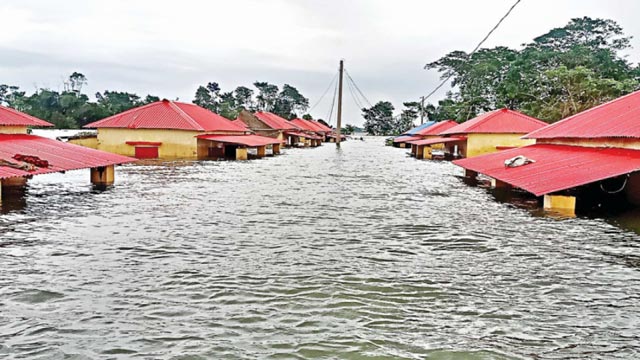Around 7.2 million people have been severely affected following devastating flash floods that began in May with a second wave starting on June 15, in nine northeastern districts of Bangladesh, said a media statement from the UN Resident Coordinator in Bangladesh.
The affected districts are Sylhet, Sunamganj, Moulvibazar, Habiganj, Kishoreganj, Netrakona, Brahmanbaria, Mymensingh and Sherpur.
Sylhet, Sunamganj, Moulivazar, Habiganj and Netrakona are the most affected.
According to the statement, on July 2-3, a joint mission of the United Nations, humanitarian donors (European Union, the United Kingdom) and NGO partners visited the flood-affected districts of Sylhet and Sunamganj.
"The government has moved over 472,000 people to some 1,605 shelters. Many of the most vulnerable people within the communities that we spoke to have received vital food assistance," it said.
The UN and NGO partners are supporting these efforts by delivering food assistance, cash, emergency drugs, dignity and hygiene kits and education support to the affected families.
UNICEF re-allocated $2.8 million of internal resources to meet the emergency needs and has provided life-saving support to nearly one million people, read the statement.
WFP distributed 85 tons of fortified biscuits to 34,000 households in three districts.
UNFPA has provided referral support for pregnant women to access hospitals and positioned midwives to provide 24/7 emergency obstetric support. UNFPA is also operating maternity waiting homes for pregnant women while they wait for institutional delivery, it added.
The WHO provided 250,000 water purification tablets to the affected people. Key national and international NGOs are providing vital emergency response in the most-affected areas, including the provision of critical cash assistance, safe drinking water, shelter, and emergency sanitation under the government's leadership.
In addition, some 60,000 women in the affected areas are pregnant. Of them, some 6,500 will give birth in the next month. With primary healthcare centres submerged and non-functional, most of these women have limited or no access to healthcare.





